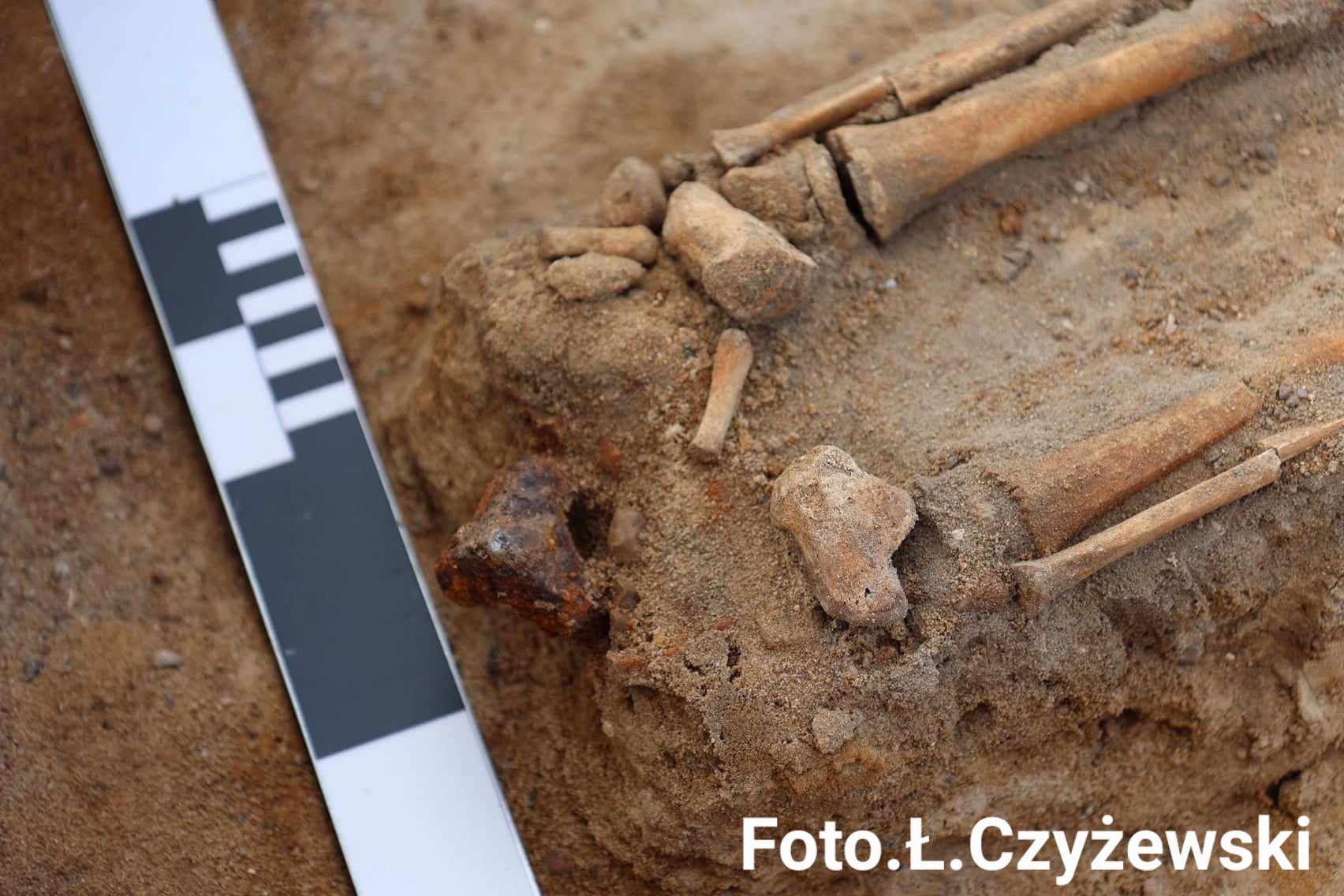
The 400-year-old remains of a child have been found in a locked grave in Poland, in a burial that points to 16th and 17th-century fears that the deceased was a vampire-like monster.
Researchers were excavating an unmarked mass cemetery in the village of Pień earlier this year when they discovered the remains of a child believed to have been a young boy about six to seven years old, Dariusz Polinski, an archaeologist with Nicolaus Copernicus University in Toruń who led the dig, told Artnet News.
“He was originally buried in an upright position, face down, with a triangular iron padlock folded under his feet,” Polinski said.
The boy’s remains were excavated, except for his shins and feet. Polinski said the grave was disturbed after the boy was buried but researchers have not been able to pin down exactly when. It is also unclear what the people who had exhumed his body had intended to do with it, though it is possible they intended to burn or destroy the corpse. A short distance from his grave, archaeologists excavated the remains of three more children.
Last year, researchers in Poland excavated a 17th-century woman buried with a sickle around her neck and padlock on her foot near where the child was buried. Photo courtesy of Łukasz Czyżewski
Polinski added that the boy’s grave is unique and that no other child burials have been observed in a similar state.
“In fact, from the moment of discovery, it was clear that the padlock that was discovered, in a sense closing this tomb, was a safeguard against the dead child,” he said, and not a measure to protect the boy’s remains in any way.
Other safeguards were also found at the cemetery, Polinski noted, including sickles and coins or stones placed in the mouths of others buried in the cemetery.
In the 1600s, people feared demons and creatures like vampires, which they believed the dead could transform into if they did not die a “good death.” The buried boy could also have had physical defects that caused people to fear him when he was alive, died of the plague, or committed suicide, Polinski said.
“One cannot say for sure that the child was seen as a demon resembling a creature later identified after the 17th century as a vampire, so for example a wraith or ghoul,” Polinski said.
A picture of the padlock that was around the boy’s foot can be seen. Photo courtesy of Łukasz Czyżewski
Polinski noted that the 16th and 17th centuries in Poland were difficult times marked by the Swedish Deluge, fighting with the Cossacks, epidemics, economic crisis, and counter-reformation. Such living conditions led to a rise in belief in demonic beings and finding scapegoats to blame, such as “witches.”
Last year, the team found the body of a woman in a similarly padlocked tomb just six feet away. Almost twin triangular padlocks were found in both graves. She was described as a “vampire” and found with a green tarnish on her palate, and the cluster above the child’s grave contained, among other things, a jaw fragment partially stained green.
Polinski said that the two discoveries in Pień bear “more or less clear traces of anti-demonic (so-called anti-vampiric) practices.”
“No less, the two graves do not, at least according to publications to date, have strict counterparts,” he added, “but they fit into the general picture of fear of the unknown and attempts to find a culprit to blame for failures and tragedies.”
More Trending Stories:
Four ‘Excellently Preserved’ Ancient Roman Swords Have Been Found in the Judean Desert